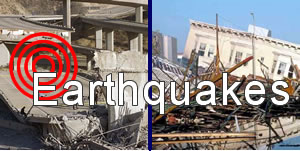
Severe weather across the South on Saturday turned deadly as tornadoes ripped through the region. Mississippi was hardest hit as one twister in Yazoo County killed 10 people and officials fear more could lie buried under the rubble.
Yazoo County was ground zero for the worst of the devastation where officials estimate 100 homes were destroyed. Mississippi Governor Haley Barbour described the scene as “utter obliteration.”
Images of the scene were heart wrenching and show homes reduced to nothing but scattered lumber. A church was destroyed, cars tossed about like toys and trees snapped like twigs and left without foliage.
Widespread power outages were reported as power lines were downed by the intense fury of the storms. Officials said thousands remained without power as of Sunday morning.
The human toll was staggering and covered three Mississippi counties. Five people were killed in Choctaw County, four in Yazoo County and one in Holmes County. The Mississippi Emergency Management Agency reported that two children were among the dead including a three month old baby.
Get the rest of this story including photos of the destruction from the Natural Disasters Examiner.











